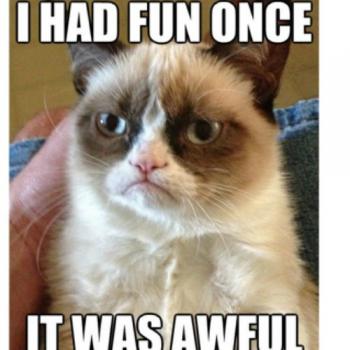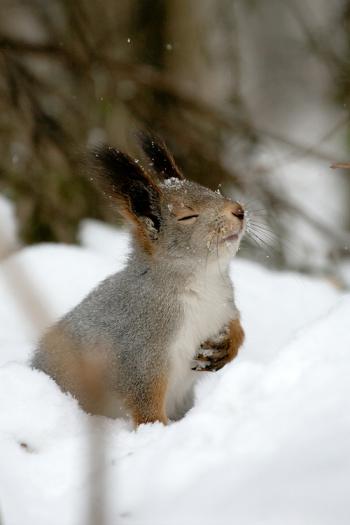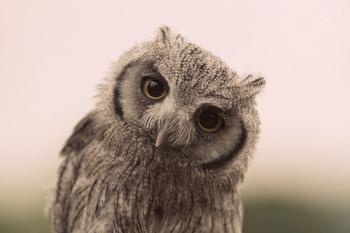Serendip is an independent site partnering with faculty at multiple colleges and universities around the world. Happy exploring!
Finding a Particular Significance in Cats on the Internet

It is no question that cats have captured the Internet. Typing in cat video on YouTube provides hours of entertainment. They are silly and aloof. They are funny In fact, there are a number of different animal pictures that cause this type of hilarity.


And, of course, there are the Sarah McLaughlinesque videos with pictures of pleading animals searching for a home. It evokes pity and begs us to donate to the ASPCA. 
What is it about these photographs that makes us so emotional? If we are truly so mentally superior to them, what causes us to relate to these animals? Some people say that the reason we think animals emote is because our emotions are reflected in their expressions. So, the actual emotion the animal feels is not there, but we project it upon them. The real question here is exactly how do animals express their feelings?
Barbara Smuts, in her essay in the book The Lives of Animals, explains her findings on animals. As a biologist, she has done many observational studies on animals. The one she describes in the book concerns baboons. She tells how she learns to interact with the baboons,
“If I turned my face away but held my ground, a charging male with cainines beared in threat would stop short of attack. I became familiar with the invisible line defining the personal space of each troop member, and then I discovered that the space expands and contracts depending on the circumstances” (Animals, 110).
As a person who is presently learning how to speak Russian, these interactions remind me very much about language acquisition. Sure, humans may have words and grammar, but all these structures are meant to do is provide a means of communicating. The baboons tell each other things about themselves without words but with body language and personal space.
Even with words it is hard to understand a different culture. There are cognates, which are great and easy to learn. The word for organize in Russian, spelled with the English alphabet, is organizovat. This is like when we see the kittens in the above picture. It looks like they are clinging to that radiator for warmth, and that is probably what they are trying to do.
Then there are false cognates, when the word in the foreign language looks like something in the native language, but it is not. The classic example of this is the word for pregnant in Spanish. It is embarazada. So at some point, almost every American student taking Spanish asks, “Are you pregnant?” instead of, “Are you embarrassed?” We see the word and interpret it how we would as English speakers, not as Spanish speakers. This correlates to the picture of the rabbit. To me, he looks like a little, heartbroken, Renaissance minstrel. However, if I knew how to communicate with rabbits, the rabbit would not be able to comprehend the idea of a Renaissance minstrel.
So, no, I do not believe that the reason we feel something when we look at funny cats or cows or dogs is because we are seeing only ourselves. Sometimes we see our emotions reflected in animals, but most of the time we have to recognize that animals express emotions, even if it is not in the way that we do. But that still does not mean we can’t laugh at a cat chasing a laser beam on You Tube.
Works Cited
23061.jpeg. Photograph. Favim.com. 24 Apr. 2011. Web. 7 Dec. 2012.
Coetzee, J.M. The Lives of Animals. Princeton: Princeton University Press, 1999.
Grumpy Cat. Photograph. Pleated Jeans. Tumblr, 12 Nov. 2012. Web. 7 Dec. 2012.
Rabbit. Photograph. Pleated Jeans. Tumblr, 25 Nov. 2012. Web. 7 Dec. 2012.
Sad Animals. Photograph. Stories That You Share. C77C Network. Web. 7 Dec. 2012.
Winter is Coming. Photograph. Pleated Jeans. Tumblr, 29 Nov. 2012. Web. 7 Dec. 2012.



Comments
Your analogy of cognates
I disagree with you slightly because I do think that part of the reason that we find some comic appreciation in these types of photos is because we see a reflection of our human emotions in the disposition of these animals. However, I also agree with your analogy of cognates; we are seeing them through our window of perspective, not theirs (the animals'). What I'm thinking about is what emotion the animal actually has in these photos, instead of what we're interpreting them as. A "smiling" cat may actually be baring it's teeth viciously. I think this paper is really creative, and it really grabbed my attention Susan!